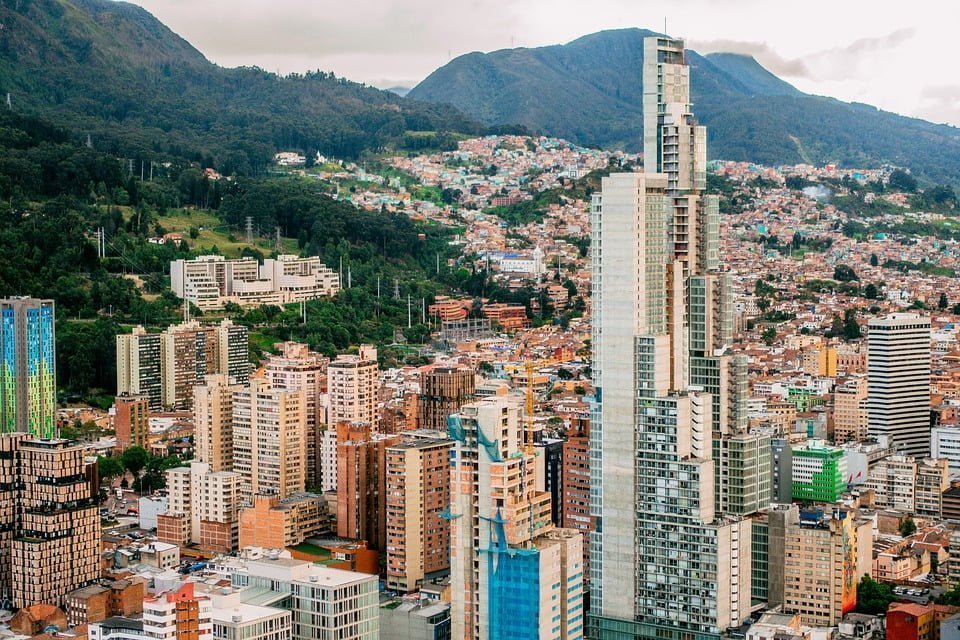Mobility for the masses
The Bogotá Method: a “TransMilenial” Challenge with an innovative solution
With its ongoing urban mobility transformation process, an already world-wide famous bus system and innovative private/public partnerships, Daniel Herrera reports from Bogotá, Colombia, a city that is setting an example of new mobility services integration and resilience that could inspire real change in similar contexts
For decades, the Colombian capital has been characterised by having a complex urban mobility situation. Inefficiency on times, scarce infrastructure and the lack of a proper public mass transportation system have caused a burdensome situation for most of the city dwellers of this Latin American metropolis. Before the construction of the world-famous Bus Rapid Transit system (BRT) TransMilenio, the city’s public transport was managed by private traditional transportation companies who provided a poor quality service due to a crumbling fleet of old buses and a deteriorated road network, all combined with an evident lack of civic-mindedness from all different actors within the public realm, such as bus drivers, passengers, pedestrians, and even road traffic control officers.
From a traditional public transport scheme to a modern mass public transport system
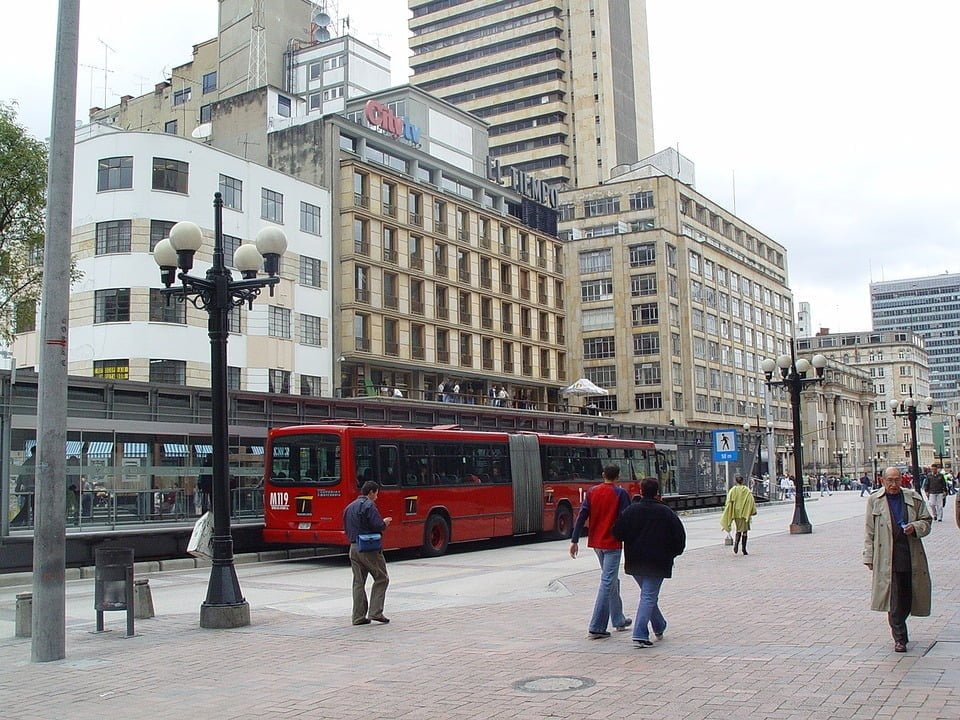 That gloomy urban mobility past started to change at the beginning of the 21st century, once the city decided to set out an ambitious project to completely transform its public transportation system, a project that not only entailed a physical change in the built infrastructure but also required citizens to embrace a sense of belonging for the public realm. As a result of this process, the city’s public authorities developed TransMilenio as the perfect cost for value solution to provide the city with a modern mass public transport system without breaking the city’s budget. Even though a metro system would’ve been the best solution given the size of the population and the distances to cover, at that moment the smartest solution was to promote a system that could be built quickly and with the minimal conditions to provide a dignified mass public transport to citizens tired of the traditional system.
That gloomy urban mobility past started to change at the beginning of the 21st century, once the city decided to set out an ambitious project to completely transform its public transportation system, a project that not only entailed a physical change in the built infrastructure but also required citizens to embrace a sense of belonging for the public realm. As a result of this process, the city’s public authorities developed TransMilenio as the perfect cost for value solution to provide the city with a modern mass public transport system without breaking the city’s budget. Even though a metro system would’ve been the best solution given the size of the population and the distances to cover, at that moment the smartest solution was to promote a system that could be built quickly and with the minimal conditions to provide a dignified mass public transport to citizens tired of the traditional system.
The BRT’s success and the next step towards a metro system
With the construction of the BRT, the city was prompted to develop a dense network of cycle paths and associated infrastructure that also had the added bonus of achieving the aforementioned change in the citizens’ civic-mindedness.
The city is finally seeing an end of a public tender process that will lead to the construction of the first metro line by 2020
As of today, even though the system has recently expanded its infrastructure and bus fleet, it faces many challenges since a BRT system for a city the size of Bogotá is intended to be a transition scheme towards a heavy metro system. The debate sustained among political actors over the construction of the metro system has been subject to intense discussions over decades, but the city is finally seeing an end of a public tender process that will lead to the construction of the first metro line by 2020. Even though the BRT system counts 114km of main lines, it still falls short of mobilising a city of 8m inhabitants. However, its construction brought, as mentioned before, infrastructure offsets represented in a 400km cycling path networks (one of the largest in the world), major improvements to the road network and a sense of modernity to a city that needed concrete actions to overcome an unbearable urban mobility situation by the end of the century.
Located in the geographical centre of the country and with an approx. population of 8m inhabitants, Bogotá is the capital and largest city of Colombia. In recent years, the city has been characterised for being a landmark of urban and mobility renewal in Latin America, setting out ambitious projects such as TransMilenio, Transmicable (Cable car), and developing and extensive cycling infrastructure.
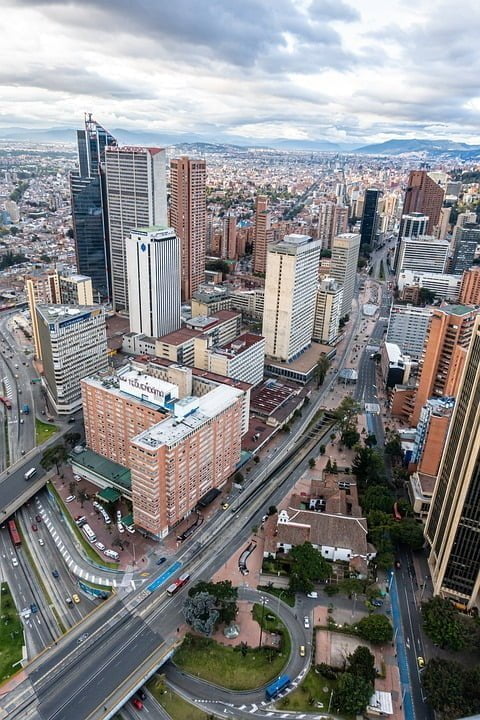
An ongoing mobility transformation process of innovative solutions
Given the fact that the city’s current transport offer still faces many challenges to provide citizens with accessibility options, new mobility services arise as service modes favourable to complement traditional transport providing first-last mile connectivity, but also as a sustainable solution for short-distance trips of any purpose. The worldwide eruption of new mobility services has not been unfamiliar to Bogotá since the city saw, as have many other places around the world, its streets flooded almost overnight with e-scooters and other shared micro-mobility devices. Many companies such as Lime, Grin and Movo launched their operations and with it, many concerns related to public space management, road safety, equity, and operational requirements arose among citizens and public authorities. As a result, the city decided to take a regulatory approach based on permits through the resolutions 209 and 336 of 2019, which establish the minimal requisites companies must fulfil to operate. The resolutions also define caps per operator, delimits a zone in which companies can provide the service and determines the data collection platform the companies must implement to share data with the mobility department. Finally, private shared micro-mobility operators must comply with the national road code and the circulation and parking rules defined by the resolution 006 of 2018.
In August 2019, TransMilenio decided to sign an alliance with the company Grin to provide citizens using line K along El Dorado Avenue with e-scooters to complete their trips.
At the time of going to press, the city has received six formal applications from private operators (Lime, Grin, 11:11, Grupo Sánchez Barrios, Movo y Muvo) interested in providing the service and the city is currently revising the documentation. This regulatory approach shows the city’s commitment in overcoming the initial concerns as to the implementation of e-scooter schemes, as well as its desire to integrate them as an option to improve the city’s urban mobility.
TransMilenio is the bus-based mass public transport system of Bogotá. It is a Bus Rapid Transit system (BRT), which is a type of mass public transport that operates on road level within its own lane. As of today, the system counts 114km of main lines distributed in 12 lines, 134 stations and nine passenger distribution HUBs. The bus fleet counts approximately 2850 units distributed in bi-articulated, articulated and regular buses that feed the system.
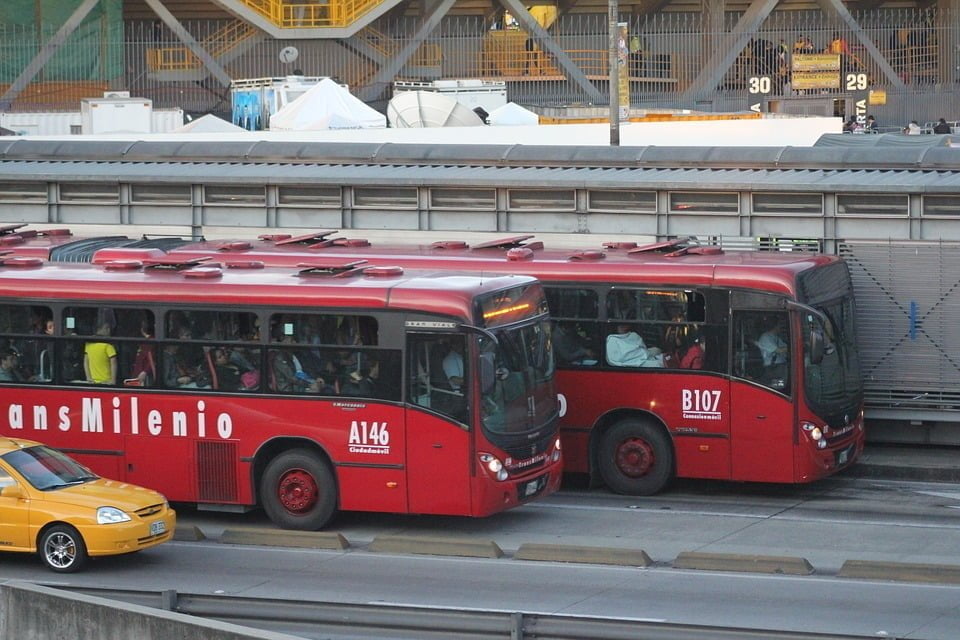
The latest actions taken by the BRT company TransMilenio, prove the effort to integrate new mobility services with traditional public transport. In August 2019, TransMilenio decided to sign an alliance with the company Grin to provide citizens using line K along El Dorado Avenue with e-scooters to complete their trips. The e-scooters are parked just outside the stations and the users must start their trip once they have crossed the pedestrian bridges over the wide avenue. The alliance shows the city’s willingness to become a leading example of new mobility services integration in Latin America, as this is the first project of its type in the region and one of the first in the world.
An uncertain future
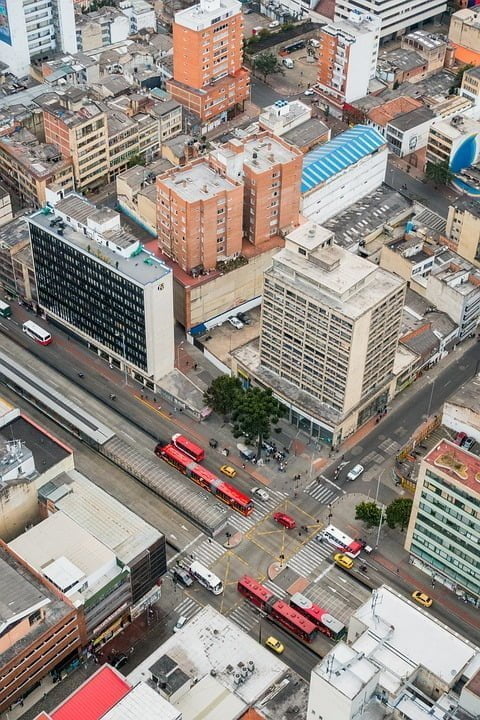 The ongoing mobility transformation process of Bogotá is still reflected in its innovative solutions along the last two decades, from TransMilenio to e-scooters the city has shown a resilient spirit to overcome the most burdensome situations posed by an unsustainable urban mobility context at the end of the 20th century. Above all, the city keeps facing enormous challenges to its urban mobility future. The construction of the first metro line in 2020 will start releasing pressure to a BRT system that cannot move the high flows of passengers generated in the city every day by itself. Meanwhile, initiatives such as alliances with new mobility services companies and a positive and comprehensive approach towards different mobility solutions will keep the city at the forefront of urban mobility in the region.
The ongoing mobility transformation process of Bogotá is still reflected in its innovative solutions along the last two decades, from TransMilenio to e-scooters the city has shown a resilient spirit to overcome the most burdensome situations posed by an unsustainable urban mobility context at the end of the 20th century. Above all, the city keeps facing enormous challenges to its urban mobility future. The construction of the first metro line in 2020 will start releasing pressure to a BRT system that cannot move the high flows of passengers generated in the city every day by itself. Meanwhile, initiatives such as alliances with new mobility services companies and a positive and comprehensive approach towards different mobility solutions will keep the city at the forefront of urban mobility in the region.
Daniel Herrera Meek is a New Mobility Services Trainee at Polis.
dherrera@polisnetwork.eu
